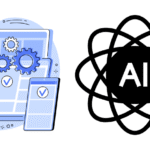 Optimizing AI Performance in Cross-Platform Environments involves fine-tuning AI models for multi-platform compatibility, boosting responsiveness and intelligence in applications, leading to improved user experiences and operational efficiency.
Optimizing AI Performance in Cross-Platform Environments involves fine-tuning AI models for multi-platform compatibility, boosting responsiveness and intelligence in applications, leading to improved user experiences and operational efficiency.
I understand the importance of optimizing artificial intelligence performance in a multi-platform environment. With the increasing need for AI systems to operate seamlessly across a range of devices and platforms, it’s crucial to ensure your AI capabilities are up-to-date and performing at their full potential.
Key Takeaways:
- Optimizing AI performance in cross-platform environment is crucial for achieving superior results.
- AI performance optimization is achieved through a combination of strategies and techniques.
- Cross-platform AI performance can be enhanced by optimizing AI algorithms and selecting the right hardware.
Maximizing AI Performance in Different Platforms
In today’s ever-evolving tech landscape, optimizing AI performance in a multi-platform environment is essential for businesses to stay ahead of the curve. With various platforms and devices available, it’s crucial that AI systems can work seamlessly across platforms.
Enhancing AI performance in a multi-platform environment involves cross-platform AI acceleration, maximizing AI performance in different platforms, and deploying AI systems effectively.
Cross-Platform AI Acceleration
Cross-platform AI acceleration is the process of optimizing AI algorithms and models to ensure they work efficiently across various platforms. By fine-tuning the algorithms, businesses can achieve faster and more accurate results, improving overall performance and maximizing efficiency.
To achieve cross-platform AI acceleration, businesses must ensure the AI models are trained using sufficient data from various platforms to capture the intricacies of each one. This will ensure that the AI system can make accurate predictions and perform tasks seamlessly across platforms.
Maximizing AI Performance in Different Platforms
Maximizing AI performance in different platforms involves optimizing the AI system to work seamlessly across various platforms and devices. This includes ensuring efficient data transfer, minimizing overhead, and optimizing the algorithms to work efficiently on each platform.
One way to maximize AI performance is to use heterogeneous computing, combining various hardware platforms to achieve optimum performance. This approach involves using a combination of CPU, GPU, and other processing units to execute tasks, ensuring the AI system works seamlessly across multiple platforms.
Deploying AI Systems Effectively
Effective deployment of AI systems involves ensuring the AI system is optimized for the specific platform it’s being deployed on. This includes fine-tuning the algorithms and optimizing the system to work efficiently within the given hardware limitations.
To effectively deploy AI systems, businesses should evaluate the hardware and software requirements of each platform and ensure the AI system is optimized accordingly. This will ensure that the system can work seamlessly across different platforms, maximizing efficiency and performance.
Overall, maximizing AI performance in a multi-platform environment is crucial for businesses looking to leverage the full potential of AI technology. By optimizing AI algorithms, achieving cross-platform acceleration, and deploying AI systems effectively, businesses can improve performance, maximize efficiency, and stay ahead of the competition.
Improving AI Efficiency and Performance

As AI becomes increasingly ubiquitous, it’s critical to optimize its performance and efficiency. In this section, I’ll explore some strategies to improve AI performance and enhance its efficiency.
Optimizing Artificial Intelligence Performance
One of the most effective ways to improve AI performance is to optimize its algorithms and parameters. By analyzing the data and identifying patterns, we can fine-tune the algorithms to achieve better results. Additionally, parameter optimization can help adjust the model’s performance to specific requirements.
AI Performance Improvement
Another approach to improving AI performance is to incorporate human expertise in AI systems. This can be done through machine learning algorithms that learn from expert human input. The combination of human and machine intelligence can lead to superior results, as the machine can learn from the expert’s decision-making process and improve its accuracy.
Optimizing AI Efficiency
Efficiency is another critical aspect of AI optimization. One way to improve AI efficiency is to reduce the computational resources required for training and inference. This can be done by using techniques such as pruning, quantization, and compression to reduce the model’s size. Additionally, deploying AI models on specialized hardware such as GPUs and TPUs can significantly improve efficiency.
Optimizing AI performance and efficiency is crucial for achieving superior results and staying competitive in the market. By implementing the strategies and techniques discussed in this section, we can improve AI performance, optimize artificial intelligence performance, and enhance overall efficiency.
It’s essential to keep up with the rapid advancements in AI technology and continuously refine our approaches to AI optimization.
Cross-Platform Optimization Techniques for AI
Optimizing AI performance in a cross-platform environment is a challenging task, but it is also essential for ensuring the effectiveness of AI systems across different platforms. Here are some cross-platform optimization techniques that can help enhance AI performance:
1. Cross-Platform AI Deployment
Cross-platform AI deployment involves developing AI models that can run seamlessly on different platforms. This can be achieved by using platform-agnostic development frameworks such as TensorFlow or PyTorch. By creating models that can be deployed across various platforms, you can reduce the time and effort required to optimize AI performance.
2. Intelligent Resource Allocation
Intelligent resource allocation involves allocating resources such as memory, processor, and network bandwidth according to the specific requirements of each platform. By optimizing resource allocation, you can improve AI performance and reduce processing time.
3. Cross-Platform AI Acceleration
Cross-platform AI acceleration involves using specialized hardware such as GPUs and FPGAs to accelerate AI performance on different platforms. By leveraging hardware acceleration, you can significantly enhance AI speed and efficiency.
4. Model Compression
Model compression involves reducing the size of AI models to improve their efficiency and performance. This can be achieved by using techniques such as pruning, quantization, and knowledge distillation. By compressing models, you can improve their speed and reduce the resources required for deployment.
5. Dynamic Optimization
Dynamic optimization involves optimizing AI performance in real-time based on the specific requirements of each platform. By dynamically adjusting AI models, you can ensure optimal performance across different platforms.
By using these cross-platform optimization techniques, you can significantly enhance AI performance and efficiency in a multi-platform environment. Whether you are deploying AI models on the cloud, mobile devices, or edge devices, these strategies can help you achieve superior results.
Wrapping up

Optimizing AI performance in a cross-platform environment is critical for achieving superior results in today’s digital landscape. As I have discussed in this article, there are various strategies and techniques that can help enhance AI capabilities and improve performance across different platforms.
By maximizing AI performance in different platforms, we can achieve better results that meet the evolving needs of businesses and consumers alike. Improving AI efficiency and performance can help organizations stay ahead of the competition and deliver superior customer experiences.
Moreover, when deploying AI systems across different platforms, it is crucial to consider cross-platform optimization techniques. These methods can help enhance performance and efficiency while minimizing errors, ensuring that AI systems deliver accurate and consistent results.
By implementing the strategies and techniques outlined in this article, organizations can optimize their AI performance and maximize their potential in a multi-platform environment.
External Resources
https://time.com/6300942/ai-progress-charts/
https://www.linkedin.com/pulse/artificial-intelligence-performance-management-system-kumar
FAQ

Why is optimizing AI performance in a cross-platform environment important?
Optimizing AI performance in a cross-platform environment is important because it allows AI systems to perform efficiently and effectively across different platforms. By optimizing AI performance, you can ensure seamless operation and maximize the potential of AI in various environments.
How can AI performance be maximized in different platforms?
AI performance can be maximized in different platforms by implementing optimization techniques and strategies. These may include optimizing algorithms, utilizing hardware acceleration, and fine-tuning AI models to suit specific platforms. By maximizing AI performance, you can achieve faster and more accurate results across multiple platforms.
What are some ways to improve AI efficiency and performance?
There are several ways to improve AI efficiency and performance. Some techniques include data preprocessing and augmentation, model optimization, and continuous learning and adaptation. By improving AI efficiency and performance, you can enhance the overall effectiveness and accuracy of AI systems.
How can optimization techniques be applied to AI in a cross-platform environment?
Optimization techniques can be applied to AI in a cross-platform environment by considering the unique characteristics and requirements of each platform. This may involve platform-specific optimizations, code optimizations, and hardware optimizations. By implementing cross-platform optimization techniques, you can ensure optimal performance and efficiency of AI systems in various environments.
Why is optimizing AI performance across platforms essential for achieving superior results?
Optimizing AI performance across platforms is essential for achieving superior results because it ensures consistent and reliable performance regardless of the platform. By optimizing AI performance, you can maximize the potential of AI systems and deliver exceptional outcomes in a cross-platform environment.
Charlotte Williams is a talented technical author specializing in cross-platform app development. With a diverse professional background, she has gained valuable experience at renowned companies such as Alibaba and Accenture. Charlotte’s journey in the tech industry began as a mobile UX designer back in 2007, allowing her to develop a keen understanding of user-centric app design.
Proficient in utilizing frameworks like React Native and Flutter, Charlotte excels in building cross-platform mobile apps and imparting her knowledge to aspiring developers. She pursued a degree in Computer Science at Cornell University, equipping her with a strong foundation in the field. Residing in San Francisco with her three beloved dogs, she finds solace in hiking the hills and connecting with nature. Charlotte’s passion for app development, combined with her dedication to sharing expertise, makes her an invaluable resource in the world of cross-platform app development.







